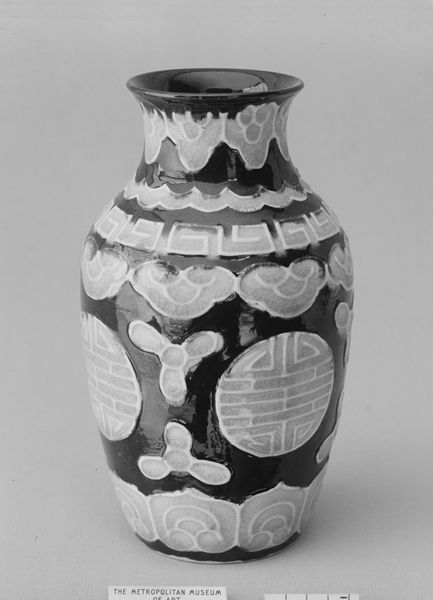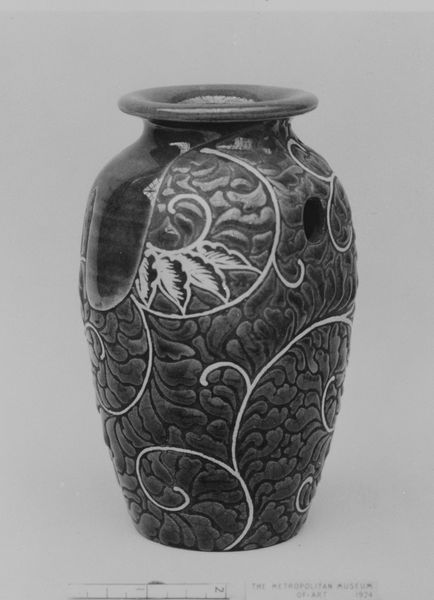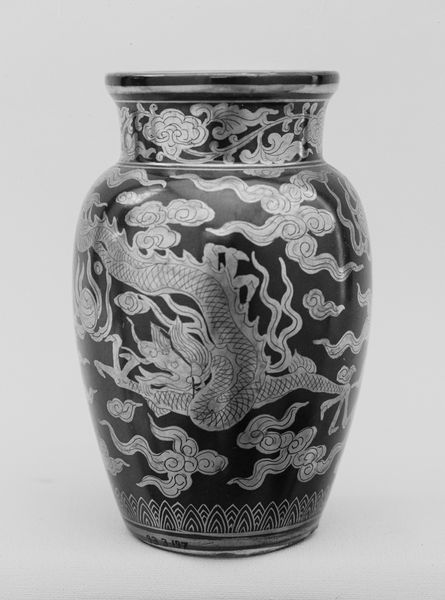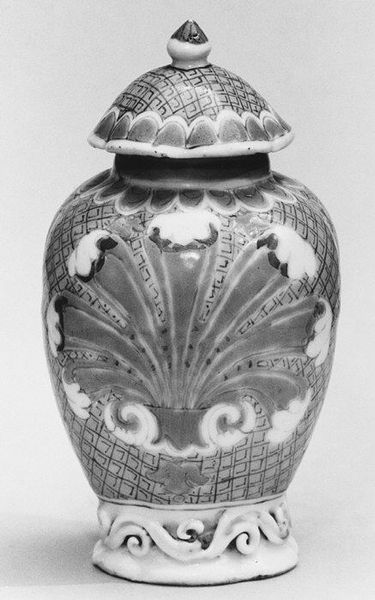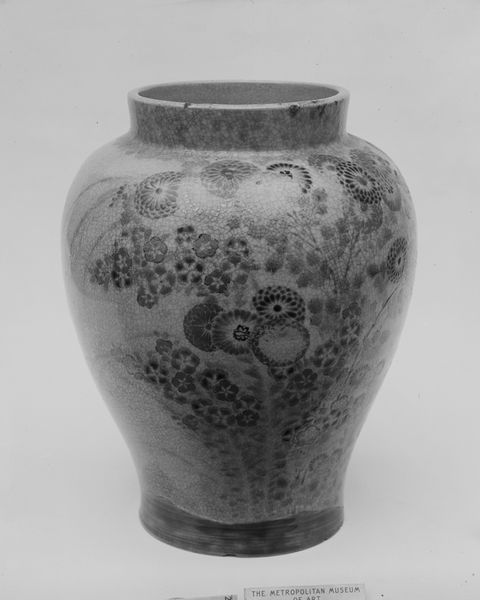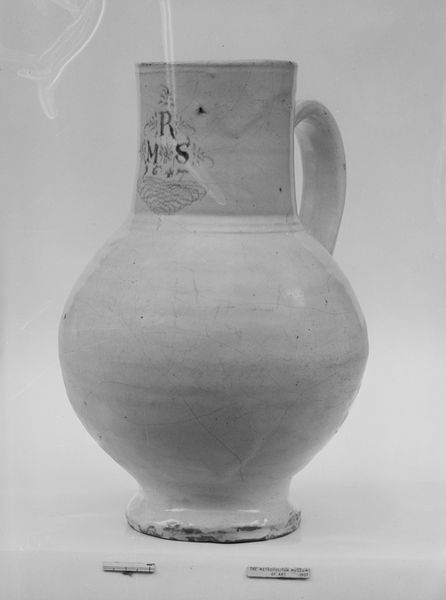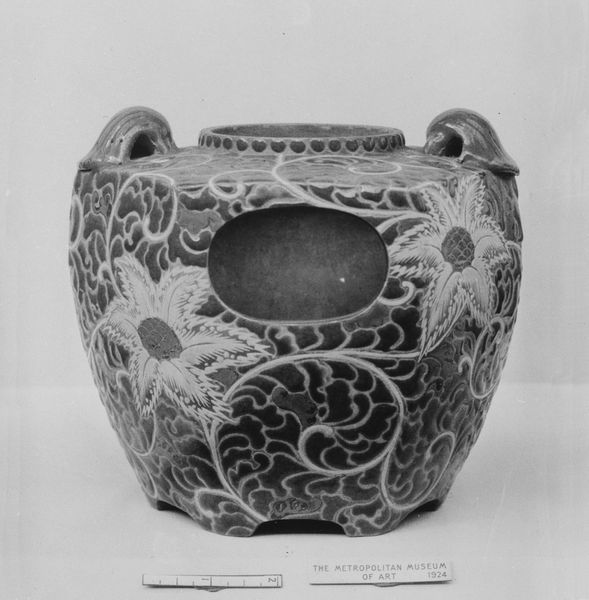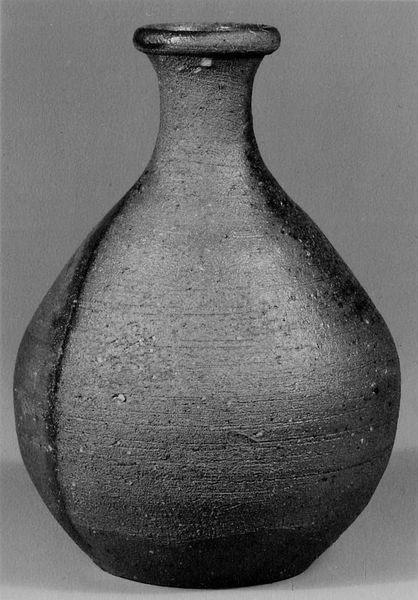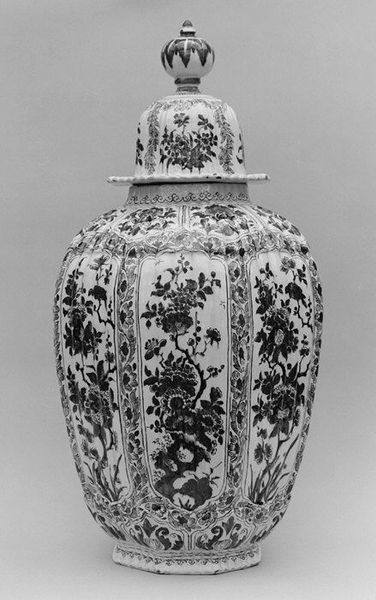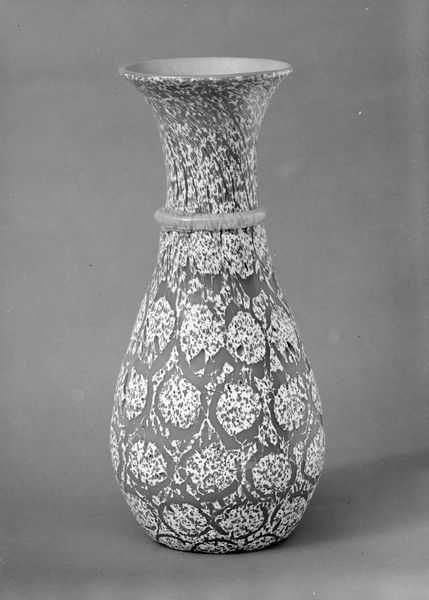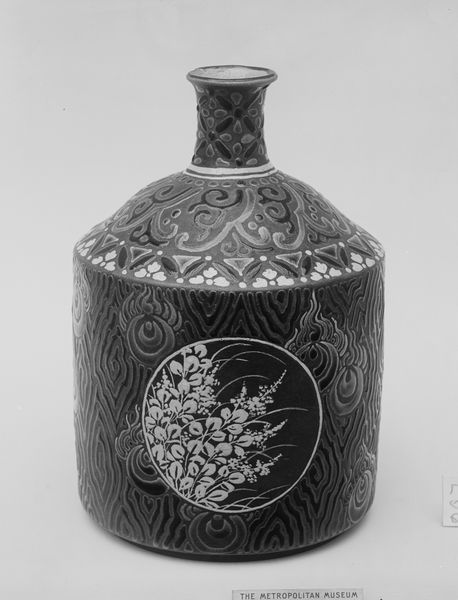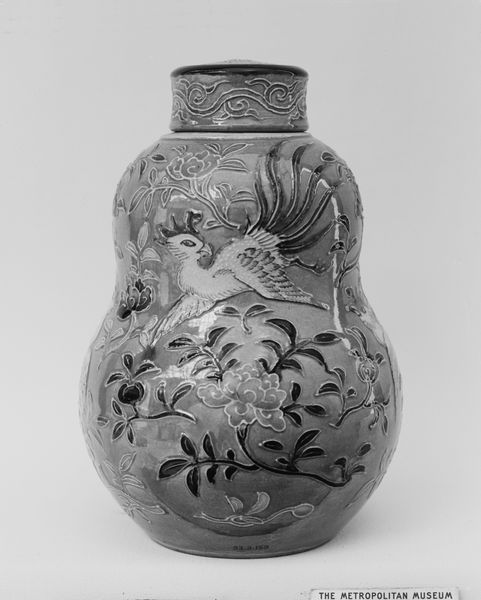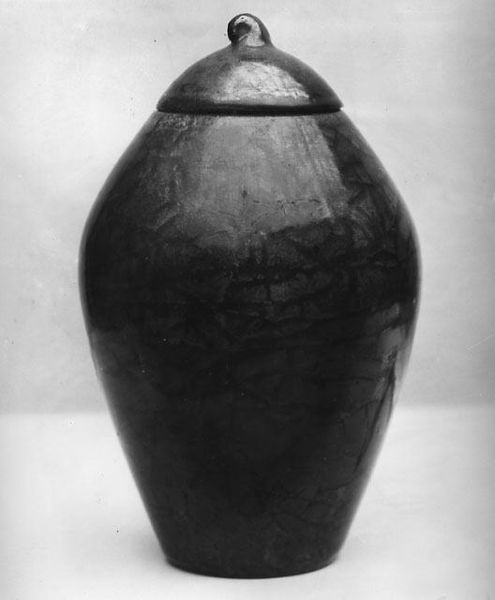
ceramic
#
asian-art
#
ceramic
#
24_meiji-period-1868-1912
Dimensions: H. 6 7/8 in. (17.5 cm); Diam. 4 3/8 in. (11.1 cm); Diam. of rim 3 1/8 in. (7.9 cm); Diam. of base 2 1/2 in. (6.4 cm)
Copyright: Public Domain
Editor: This ceramic vase, created by Eiraku Hozen in the 19th century, strikes me as very formal, with a restricted color palette. What do you see in it? Curator: It speaks to a specific moment in the history of Japanese art and its relationship with international markets and political change. Looking at it, I see the Meiji period attempting to rebrand and reimagine Japanese identity in relation to Western expectations. Editor: Rebrand? How so? Curator: Well, the Meiji government actively promoted certain crafts, like ceramics, for export. Objects like these became visible symbols of Japanese artistic prowess and helped reshape the image of Japan on the global stage, shifting from a feudal society to a modern nation. This vase, though seemingly decorative, participated in complex economic and political strategies. Editor: So it’s less about personal expression, and more about national representation? Curator: Precisely! We can see traditional motifs and techniques, but consider the intent, the destination, and the way it circulated. Whose story does this object tell, and who was it intended to impress? Consider the role of the artist within the framework of government policy and global trade. Editor: I never would have thought of a vase as a political object. It gives a whole new context to appreciating art! Curator: Exactly. Appreciating art always means considering context.
Comments
No comments
Be the first to comment and join the conversation on the ultimate creative platform.
